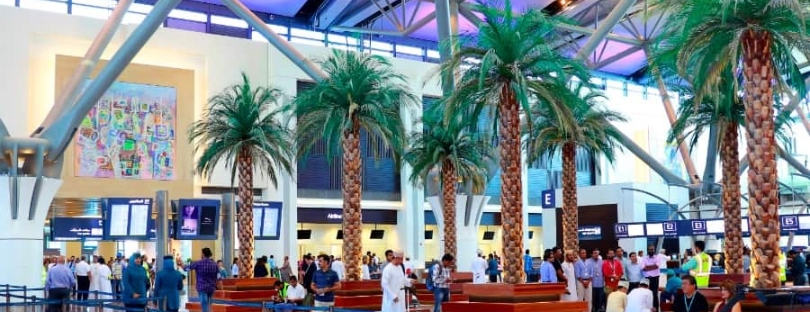
Cloud-powered travel: a gateway for innovation—and cyber risk
The global travel and tourism sector is undergoing a massive digital transformation. Fueled by post-pandemic recovery, evolving traveler expectations, and the demand for hyper-personalized experiences, industry players are rapidly adopting cloud computing, AI, IoT, and automation. From seamless mobile check-ins and dynamic pricing algorithms to AI-powered customer service chatbots and cloud-based inventory systems, the modern tourism infrastructure is more interconnected—and data-driven—than ever before. tourism cybersecurity
Cloud platforms offer speed, scalability, and real-time global connectivity that traditional IT infrastructure simply can’t match. They are the engines behind smart hospitality systems, next-gen booking platforms, personalized loyalty programs, and real-time airline operations. For the traveler, this translates into frictionless experiences. For the industry, it means operational efficiency and new revenue streams.
But this digital shift also opens the door to a growing wave of cyber threats. As more sensitive data—passenger names, payment credentials, travel itineraries, and biometric profiles—gets stored and transmitted across cloud environments, the attack surface expands. From major hotel chains to regional tour operators, no travel organization is immune to ransomware, phishing, or sophisticated supply chain attacks. In fact, the very technologies that are modernizing tourism are also creating the next generation of cybersecurity vulnerabilities.
In this article, we explore how cloud adoption is reshaping both the opportunities and risks for travel businesses. We’ll break down emerging threats, highlight real-world breaches, examine regulatory pressure, and offer a roadmap for building long-term resilience in this high-stakes digital landscape.
1. A rising tide of cloud adoption tourism cybersecurity
Travel and hospitality giants—airlines, hotel chains, booking platforms—depend on centralized cloud systems to manage reservations, CRM, dynamic pricing, and guest services. These platforms enable global reach but also concentrate access to personal data (passports, payment credentials, travel itineraries), making them high-value targets.
2. Escalating cyber threats to cloud ecosystems
Recent surge in cyberattacks highlights the stakes:
- Supply‑chain compromises: Intrusions through third-party cloud vendors can lead to widespread data breaches. According to industry reports, supply‑chain attacks often remain undetected for nearly a year (≈307 days), heightening complexity.
- Social‑engineering tactics: Attackers sometimes bypass perimeter defense by impersonating internal users. For instance, social-engineering breaches in travel IT departments have triggered ransomware outbreaks.
- AI‑driven automation: Cyber adversaries accelerate attacks using AI to orchestrate phishing, identify zero-day flaws, or overwhelm cloud workloads. tourism cybersecurity
3. Notable breaches within travel portfolios
A string of high-profile incidents signals the urgency:
- Marriott–Starwood breach: Unpatched Starwood database had already been compromised (2014–2018), only uncovered post-acquisition—resulting in £20 million-plus in fines under GDPR.
- MGM Resorts ransomware: In September 2023, ALPHV gang hit MGM’s cloud services via targeted social engineering, halting guest services and costing ~$100 million.
These underscore how cloud-driven expansion—from M&A to global operations—deepens reputational and regulatory risk.
 4. Regulatory pressures and evolving compliance
4. Regulatory pressures and evolving compliance
Post-GDPR and NIS2, travel providers face tight regulation. In addition to mandatory reporting (e.g., within 72 hours for GDPR incidents), both EU and UK regulators enforce tough penalties for data leaks.
Travel brands must also adapt to emerging standards like the EU’s Cyber Resilience Act, which covers cloud-based digital services and IoT devices—both pervasive in modern hotels, airports, and transportation networks.
5. How travel firms can build cyber-resilience
To strike a balance between agility and security, tourism leaders should embed strategic measures at scale:
| Priority | Action | Why it matters |
|---|---|---|
| Pre‑M&A security due diligence | Audit cloud ecosystems, vendor cybersecurity, access logs; integrate strong data governance clauses into deals. | Prevent hidden legacy breaches—as in the Marriot–Starwood case—before they compound. |
| Zero‑trust + segmentation | Isolate systems (e.g., reservation databases, guest‑facing apps, payment flows) with role‑based access. | Limits breach impact and slows lateral movement post‑intrusion. |
| Continuous cloud monitoring | Deploy 24/7 detection tools (IDS/IPS), augmented by AI. Real-time anomaly alerts and automated lockdown protocols. | Addresses stealthy supply‑chain or AI‑enabled attacks. |
| Security‑aware culture | Conduct regular, deep‑dive phishing and social engineering exercises for IT and frontline staff. | Recognizes—in travel, humans are often the weakest link in preventing ransomware. |
| Supplier and vendor governance | Mandate annual pen‑tests, shared cyber readiness reports, and incident escalation protocols across partners. | Reinforces defences across the extended cloud ecosystem—including OT/IoT. |
| Regulatory playbook and scenario planning | Define legal duties (e.g., GDPR, NIS2), designate reporting roles, and conduct breach simulations. | Ensures swift compliance and minimizes fines, reputational damage. |
6. Future‑proofing with security & innovation
The future of tourism tech will deepen reliance on connected experiences: biometric check-in, AI‑driven pricing, smart rooms, autonomous vehicles. But these innovations broaden attack surfaces:
- AI‑powered detection, AI‑driven protectors can track anomalies at machine scale.
- IoT hardening with secure firmware, network segmentation, and even static code verification.
- Cyber-insurance alignment, linking premiums to active security posture measures.
- Joint industry resilience, via travel-sector ISACs and shared threat intelligence forums.
Cybersecurity Giants Serving the Tourism Industry
Palo Alto Networks
Cloud security, threat detection, and zero trust for airlines and hotel chains.
Known for scalable solutions and AI-driven threat intelligence.
CrowdStrike
Protects endpoints and cloud workloads across travel platforms.
Used by several global hotel groups and OTAs for incident response and real-time defense.
Fortinet
Popular among hotel chains for secure networking, Wi-Fi segmentation, and data privacy controls.
Offers hotel-grade firewalls and SD-WAN.
Check Point Software Technologies
Provides advanced threat prevention for airline booking systems and global distribution systems (GDS).
CloudGuard suite is widely used in travel.
IBM Security
Offers cybersecurity consulting, cloud infrastructure protection, and GDPR compliance solutions.
Works with airports, airlines, and OTAs.
Microsoft Security (Defender for Cloud, Sentinel)
Powers many enterprise-grade cloud security environments in the travel space.
Integrated into Azure-based hospitality platforms and booking engines.
Specialized Vendors in Travel & Hospitality Cybersecurity
Trustwave (a Singtel company)
Offers managed detection and response (MDR) and PCI compliance specifically for hospitality.
Mandiant (a Google Cloud company)
Known for advanced threat intelligence, often called in after large hotel or airline breaches.
CyberGRX
Focuses on third-party risk management, helping hotel chains manage risks across suppliers and partners.
Armor Cloud Security
Provides cloud-native protection for travel SaaS companies, including booking platforms and loyalty apps.
Darktrace
Uses AI to detect anomalies in real time; used by some airlines and airport operators for behavioral threat detection.
Final take about tourism cybersecurity
Cloud transformation has propelled tourism into a new era of data‑driven service and global scalability. But every service layer added—from booking platforms to AI concierge—requires mature cybersecurity strategies. Leading travel firms will invest in continuous cloud visibility, embed cybersecurity into culture and M&A, and align rapidly evolving regulation with business agility.
In a digital-first travel landscape, a single breach can swiftly undermine trust—a currency far more precious than loyalty points.





 4. Regulatory pressures and evolving compliance
4. Regulatory pressures and evolving compliance



